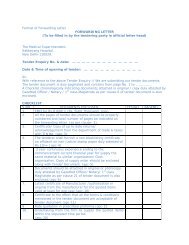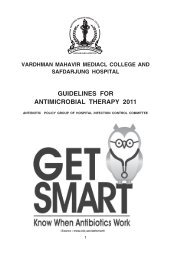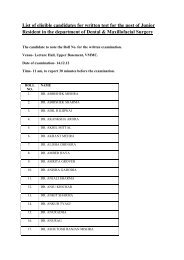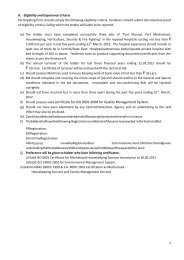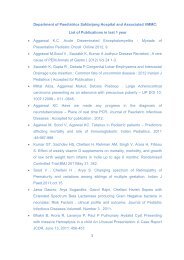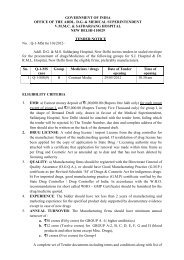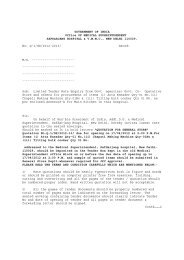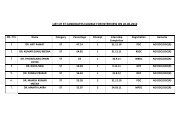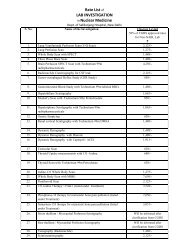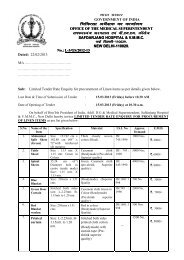Guidelines for INFECTION CONTROL POLICY - Safdarjung Hospital
Guidelines for INFECTION CONTROL POLICY - Safdarjung Hospital
Guidelines for INFECTION CONTROL POLICY - Safdarjung Hospital
Create successful ePaper yourself
Turn your PDF publications into a flip-book with our unique Google optimized e-Paper software.
Epidemiological methodsThe investigation of an outbreak may require expert epidemiological advice on procedures.Formulation of a hypothesis regarding source and spread is made be<strong>for</strong>e undertaking microbiologicalinvestigations in order that the most appropriate specimens are collected.Steps to be taken to investigate an outbreakStep 1• Recognition of the outbreak. Is there an increase in the number of cases of a particularinfection or a rise in prevalence of an organism? Such findings indicate a possible outbreak.• Preliminary investigation must begin by developing a case definition, identifying the site,pathogen and affected population. Define the outbreak in time, person and place.• Determination of the magnitude of the problem and if immediate control measures arerequired. If so general control measures such as isolation or cohorting of infected cases;strict hand washing and asepsis should be immediately applied.• Verification of the diagnosis. Each case should be reviewed to meet the definition.• Confirmation that an outbreak exists by comparing the present rate of occurrence withthe endemic rate should be made.Step 2• The appropriate departments, personnel and the hospital administration should be notifiedand involved.Step 3• Additional cases must be searched <strong>for</strong> by examining the clinical and microbiological ecords.• Line listing <strong>for</strong> every case, patient details, place and time of occurrence and infectiondetails should be developed.• An epidemic curve based on place and time of occurrence should be developed, the dateanalyzed, the common features of the cases e.g. age, sex, exposure to various riskfactors, underlying diseases etc. should be identified.• A hypothesis based on literature search and the features common to the cases; shouldbe <strong>for</strong>mulated about suspected causes of the outbreak.• Microbiological investigations depending upon the suspected epidemiology of the causativeorganism should be carried out. This will include (a) microbial culture of cases, carriersand environments (b) epidemiological typing of the isolates to identify clonal relatedness.• The hypothesis should be tested by reviewing additional cases in a case control study,cohort study, and microbiological study.Step 4• Specific control measures should be implemented as soon as the cause of outbreak isidentified.• Monitoring <strong>for</strong> further cases and effectiveness of control measures should be done.• A report should be prepared <strong>for</strong> presentation to the HICC, departments involved in theoutbreak and administration.Immediate control measuresControl measures should be initiated during the process of investigation. An intensive reviewof infection control measures should be made and general control measures initiated at once.General measures include:• Strict hand washing• Intensification of environmental cleaning and hygiene• Adherence to aseptic protocols• Strengthening of disinfection and sterilization14



